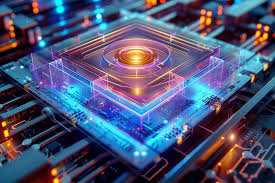Revolutionizing Data Storage: Quantum Defects Unlock Ultra-High-Density Optical Memory

Researchers from Argonne National Laboratory and the University of Chicago have unveiled a groundbreaking optical memory technology that combines rare-earth elements with quantum defects, paving the way for denser and more efficient data storage, SciTech Daily reported yesterday.
This innovative approach utilizes wavelength multiplexing to surpass the limitations of traditional optical devices like CDs and DVDs, potentially increasing bit density significantly.
The study, published in Physical Review Research, explores how optical data can be transferred from rare-earth emitters embedded in solids to nearby quantum defects. By developing theoretical models, the researchers demonstrated how energy transfer operates at the nanoscale, revealing new symmetry rules for near-field energy transfer.
This research not only enhances our understanding of quantum mechanics but also opens pathways for advanced optical memory technologies. Future work will focus on determining data retention times and retrieval methods, marking a significant leap in the quest for durable, fast, and energy-efficient storage solutions.





